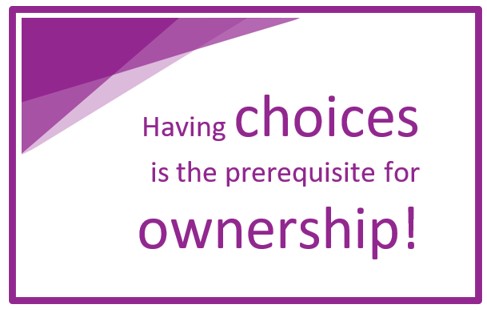Social-emotional learning (SEL) is here to stay. And that is a great thing! As learning is such a holistic phenomenon, we educators must be aware of the emotional and social parts of it, and encourage students to collaborate and make most of their learning experience. In other words: instead of just teaching/ providing information, we must empower our students to learn.
There is a huge difference between these two approaches to education.
I personally believe that student empowerment is one major superpower of Finnish education. I know I experienced it throughout my own education in Finland, more in some classes and less in some others, througout the basic education (K-12). My deepest and most profound experiences of learner empowerment happened during my M. Ed. studies and teacher training at University of Jyväskylä. So, I am happily exporting student empowerment and making it an integral part of my own practice.
The easiest way to empower learning is to provide choices for students and discuss learning being an iterative process. We generally have stronger emotional attachment to things we get to choose – and that emotional connection increases the likelihood of deeper learning to happen. It’s because ownership, engagement and intrinsic motivation amplify each other. Empowered students have more ownership over what they learn.

Empowering students to learn autonomously can be scary in the beginning. I am not suggesting that you should let go of all the classroom rules and allowing students to do whatever they please. That would not be education. But starting to add choices for students to support their self-direction, and embedding SEL into every lesson is a great start. CASEL has awesome resources for relationship skills, social and self-awareness, self-management and responsible decision-making. The only way students can learn to make good decisions is to have choices and get to practice choosing in safe environments. Making good choices is just one skill among other life skills and we should foster it in all possible ways we can. Because that’s how we support students’ critical thinking!
It is important to remember that SEL is so much more than just training students to use their “power skills” like executive functions or relationship skills – SEL is an integral part of human development and needs to be embedded into curriculum and instruction instead of being taught as another school subject.
Teaching with empowerment changes the power dynamics in a classroom, and communications between faculty and students. We teachers and faculty want to assume the role of a guide, not the leader. And we do this to support learner agency which is “perhaps the most higher-order, emergent, abstractly defined, and most cherished of human functions” [1]. This is why empowerment is so important! Learner agency is all about the choices and degree of freedom students have about their learning! Teaching how to choose is an integral part of education.
Empowering students to learn means striving to provide ample opportunities for students to have autonomy (choose readings, assignments, assessments, partners, projects, etc.) so that they can grow their competencies and relate with the teacher and each other. These three (A, C, and R) are parts of self-determination in life and learning. More information under this link. It is crucially important for us as educators to realize that the gaming industry has already harnessed the ACRs and benefit from the motivational pull to play [2]. The three elements are:
- Autonomy – have choices and be an agent of one’s own life and learning
- Competence – feel capable in own learning and growing skills
- Relatedness – accceptance, feeling connected and interacting with others
We can empower students to learn by emphasizing ACRs. Alas, it is harder for students to learn to use their self- determination in compliance-driven learning environments. It is harder for teachers, too, because in the beginning it may not be easy to figure out what kind of choices students could have. Fortunately we have contemporary research to support our choices for empowerment.
APA – Top 20 principles for k-12
Choice and Intricnsic motivation – Patall et al. meta-analysis
Meaningful learning: essential factor – Novak article
Motivation and Self-Regulated Learning – Book
References:
[1] Zelazo, P. D. (2020). Executive Function and Psychopathology: A Neurodevelopmental Perspective. Annual Review of Clinical Psychology, 16. (citation is from page 443)
[2] Niemiec, C. P., & Ryan, R. M. (2009). Autonomy, competence, and relatedness in the classroom: Applying self-determination theory to educational practice. Theory and research in Education, 7(2), 133-144.

2 Responses to “Empower students to learn!”